Circuit golf is a type of recreational circuit design competition in which participants strive to achieve the smallest possible design to solve a certain problem using a technology of choice*.
Building electronic dice is a rite of passage for every electronics tinkerer. Most likely you assembled it as a DIY kit sometime years ago. But was that really best way of doing it?
The goal is to create an electronic dice circuit with as few components and/or the most obscure technology possible. This is supposed to be an ongoing friendly competition. Just add your entry as a log. Anything goes from a technology point. Simulation is ok, when it is reasonably linked to something that could be made in reality. But obviously the real thing is always better.
*Totally stolen from here https://en.wikipedia.org/wiki/Code_golf

An electronic die typically consists of these elements:
- An oscillator that can be enabled to "roll" the die
- Some kind of counter
- An encoder to convert the states from the counter into the "pips".
- 7 dots / "pips". These are typically LEDs, but why not use something else?
List of entries
#001 A classic 74XX TTL implementation (found in a book)
#002 "Light Dice" in transistorless Light Logic by Dr. Cockroach
#003 Dice10: The smallest possible implementation with a MCU by Tim
#004 Dice based on low-voltage relays by Yann
#005 Dice3904-8: Smallest(?) implementation using bipolar logic by Tim
 Tim
Tim
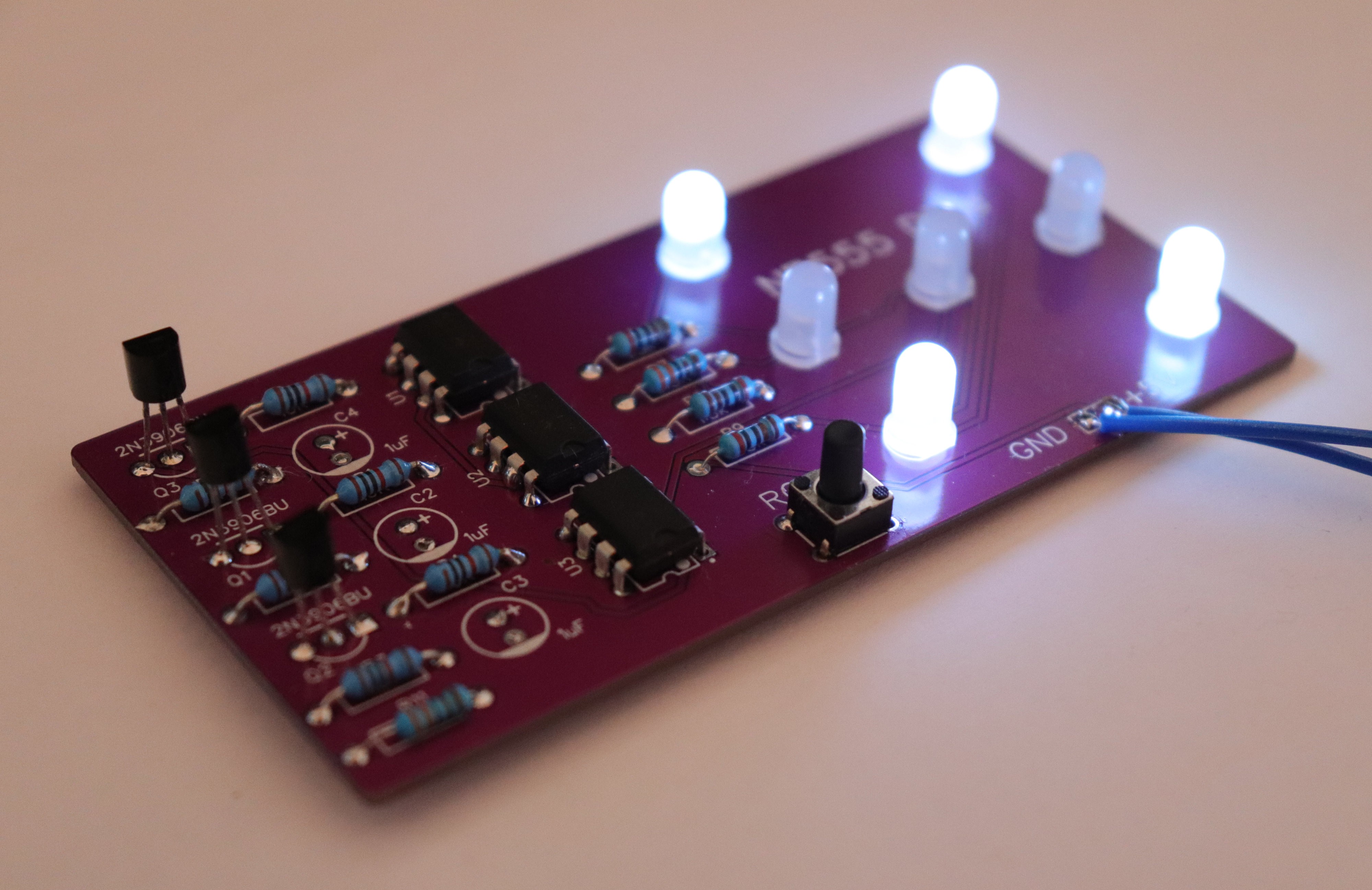
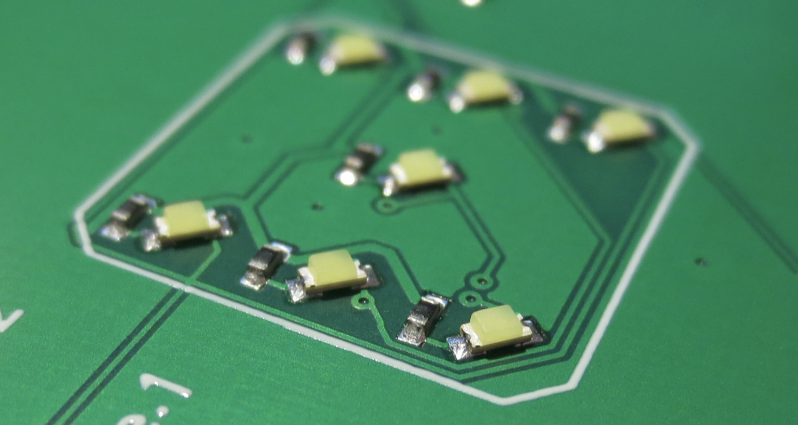






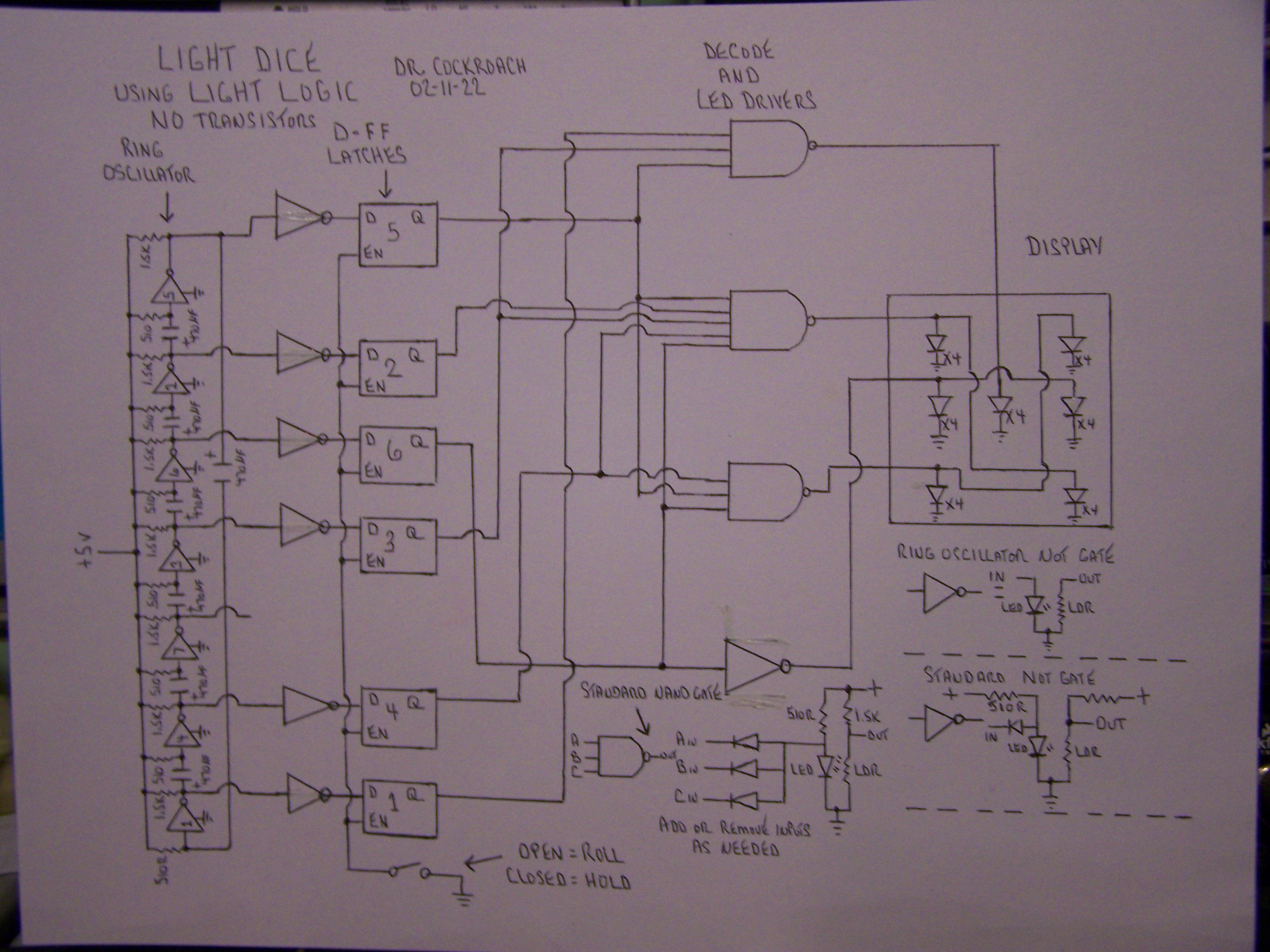
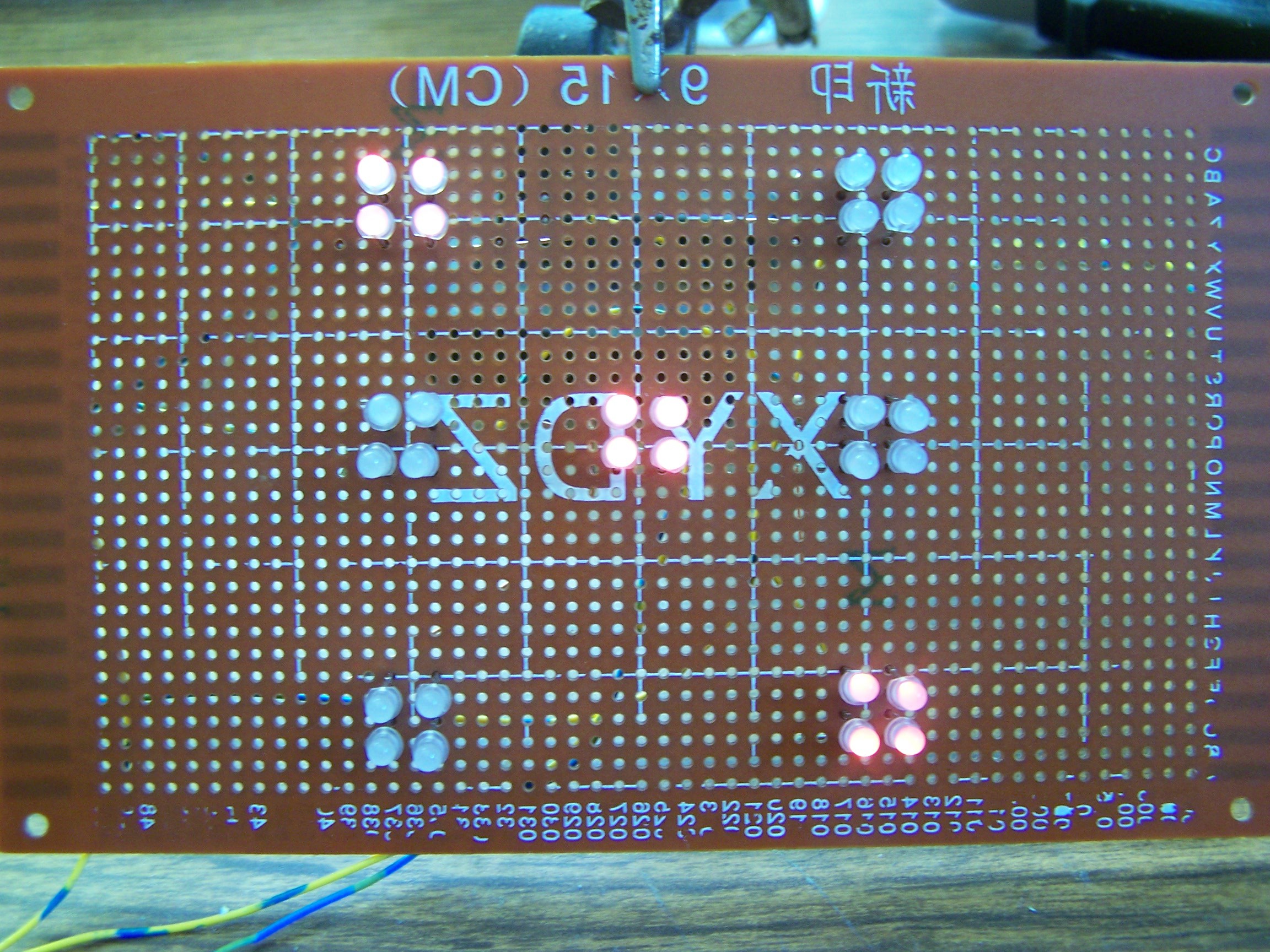
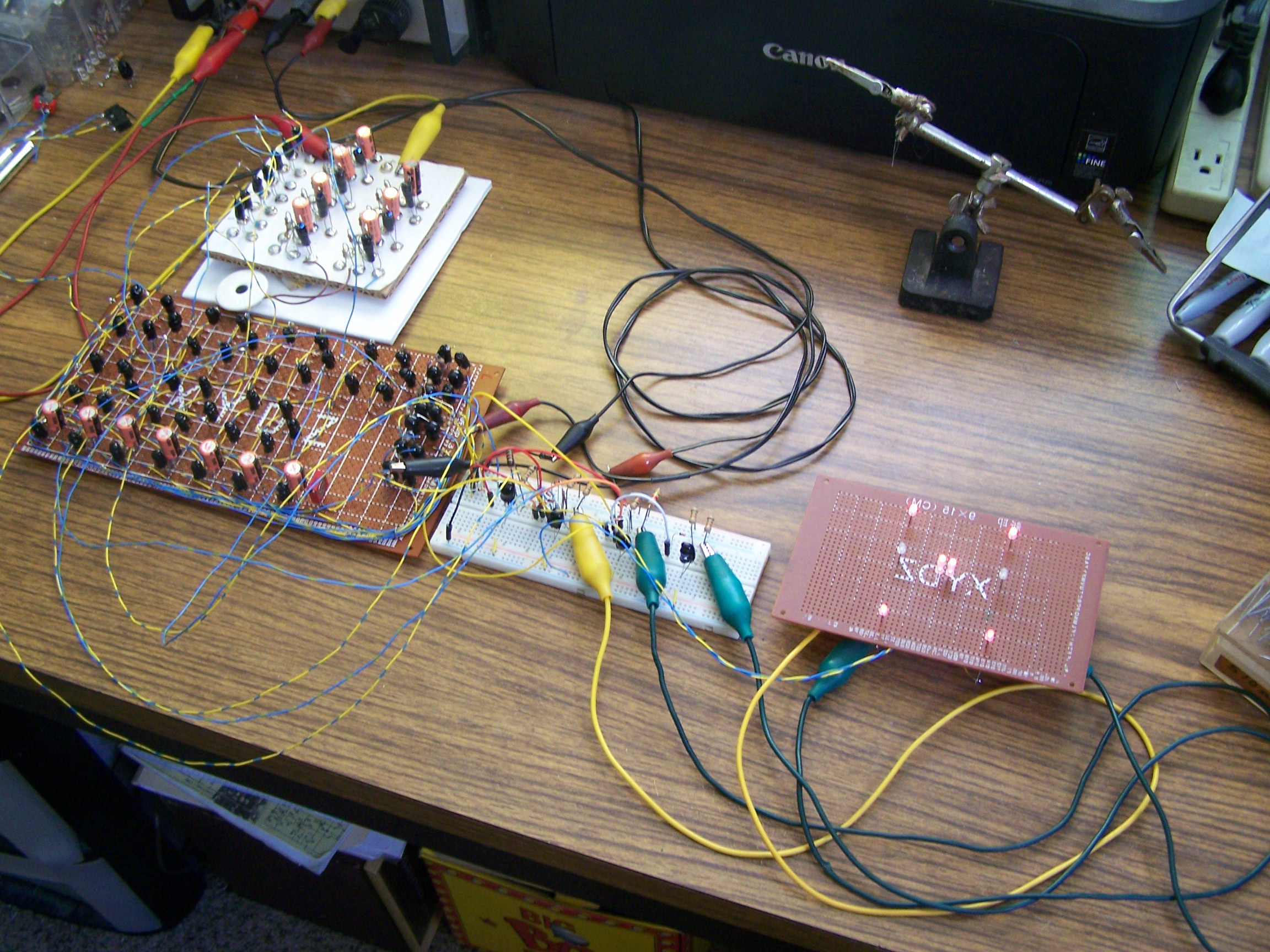
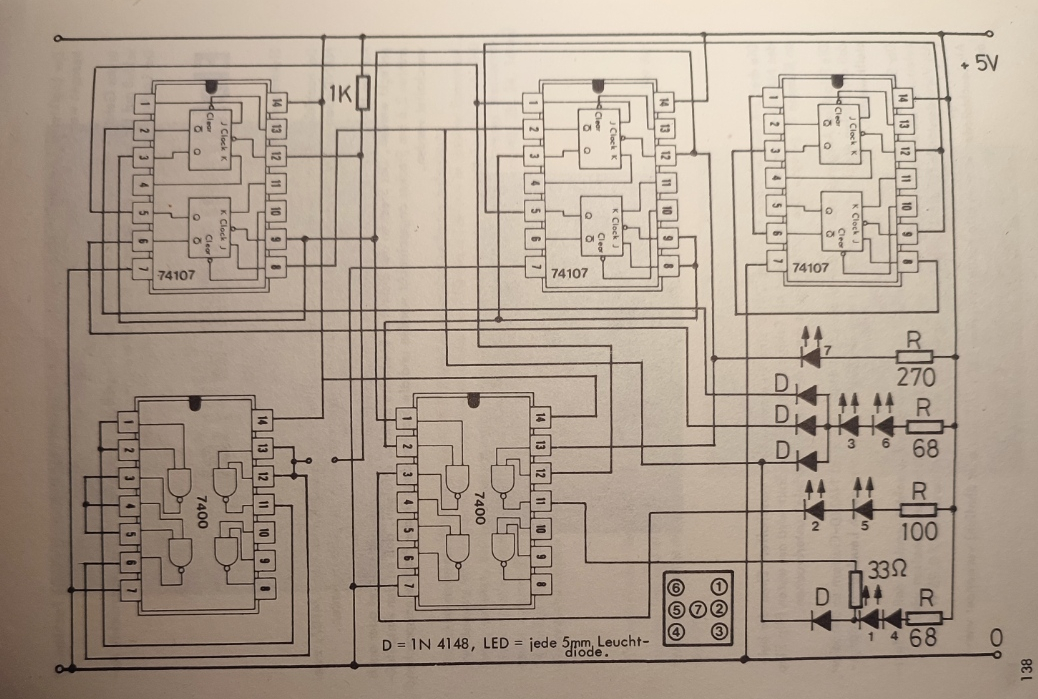




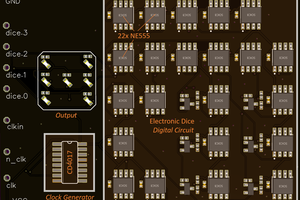
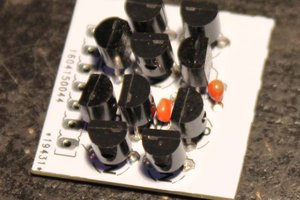
 Yann Guidon / YGDES
Yann Guidon / YGDES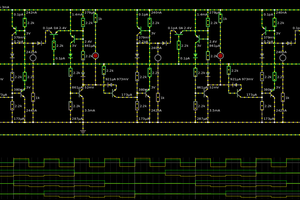
Here is an analog(!) dice I found on the net:
https://www.edn.com/a-fully-analog-electronic-dice/